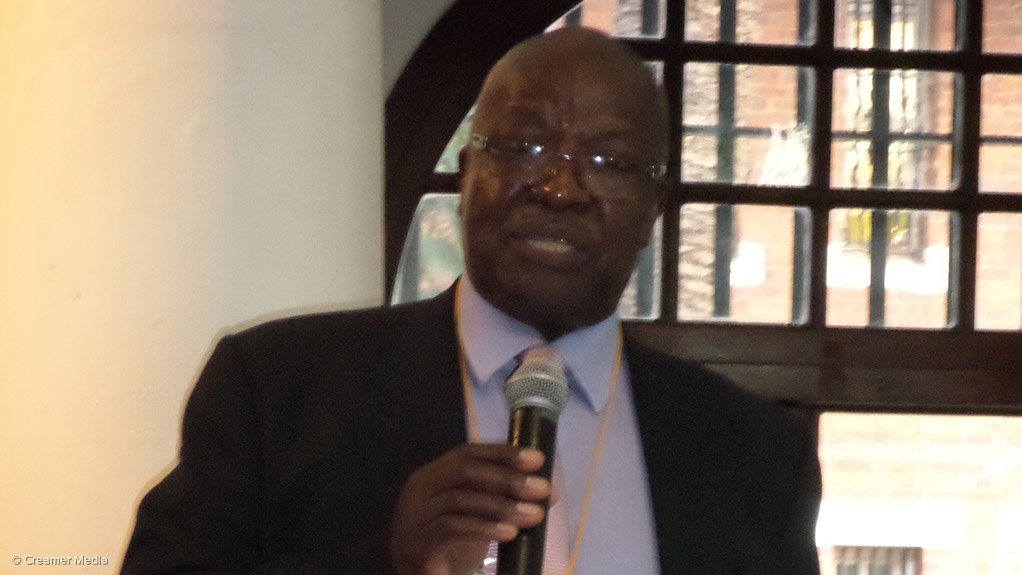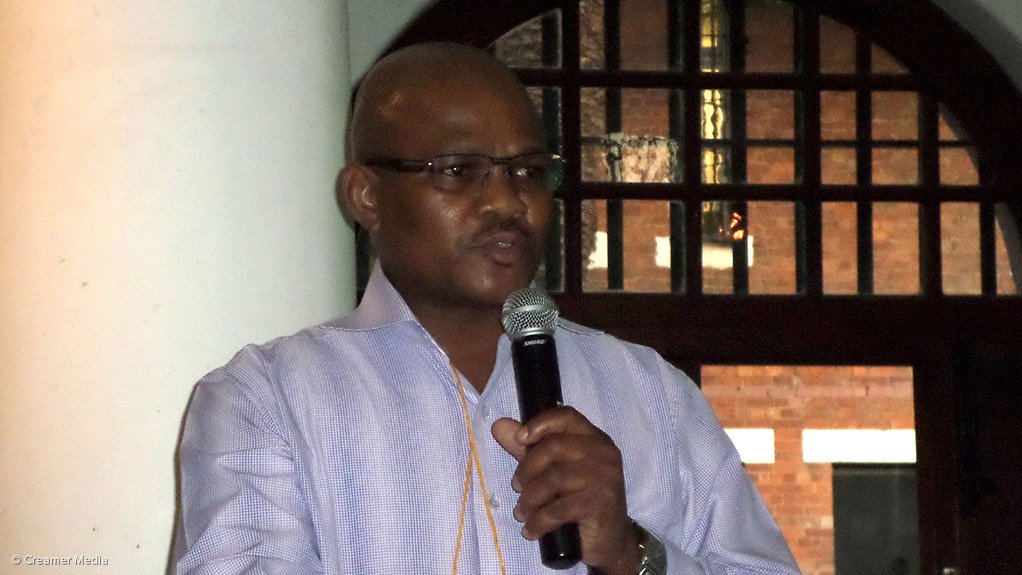Mining industry’s dark days recalled at MIC’s 20th anniversary



JAMES MOTLATSI When the National Union of Mineworkers took up the struggle of black mineworkers it was under difficult conditions
DAVID SIPUNZI Despite the widely held public perception that the local mining industry is heading for the doldrums, NUM is upbeat about the sector’s future
The mining industry used to be the main pillar of the economy of South Africa and it killed thousands of black mineworkers, many of whom are buried in unmarked graves, said National Union of Mineworkers (NUM) founding president Dr James Motlatsi at an event marking black-owned investment company Mineworkers Investment Company’s (MIC’s) twentieth anniversary, in Johannesburg, last month.
He recalled that when the NUM was founded in 1982, the current Deputy President and then NUM general secretary Cyril Ramaphosa said at the time during an NUM meeting: “Mineworkers die like flies and are buried like dogs.”
Motlatsi highlighted that, when the NUM took up the struggle of black mineworkers, it was under difficult conditions.
He said that many people were of the view that it would be difficult to organise black mineworkers in a labour union, as they comprised of people from different countries, with very different cultures.
“However, the oppression of apartheid in the mining industry made it possible to bring black mineworkers together to fight a common enemy,” Motlatsi stated.
He said the NUM’s first aim was to restore dignity to black mineworkers, who were treated with disrespect, as if they were subhuman, by government, mining houses, other black people living in urban areas and their own communities.
Nonetheless, Motlatsi enthused that the NUM restored the dignity of black mineworkers and made them proud of their occupation.
He pointed out that one of the major legacies of the NUM was that it introduced the Mineworkers Provident Fund (MWPF) in 1989, as, prior to its establishment, black mineworkers would retire without having any retirement savings, leaving them to live out their days in poverty and squalor.
“In 1995, the NUM went further and formed the MIC to create a sustainable asset base for the benefit of mine, energy and construction workers and their dependants,” Motlatsi pointed out.
He stressed that the formation of the MIC “was not an easy task”, as there were those within the union’s ranks that said the NUM was moving towards capitalism by creating an investment company and, as a socialist movement, it would violate the core principles of the organisation.
However, agreement was reached in NUM that the MIC was needed, as the union required a significant amount of funds for its social welfare programmes, which it could not raise solely through donor funding.
Challenges
Meanwhile, Motlatsi highlighted that the issue of mineworkers contracting silicosis was a significant matter, which “must be tackled as a matter of urgency”.
“The problem of silicosis is not something that can be blamed on the legacy of apartheid. The NUM should be at the forefront of driving the campaign against the disease,” he stated.
Motlatsi stressed that the silicosis issue should not be left to nongovernmental organisations, as it was the responsibility of labour unions to champion the cause of mineworkers and mineworker health matters.
NUM general secretary David Sipunzi added during his keynote address that despite the widely held public perception that, the local mining industry was heading for the doldrums, the NUM was upbeat about the sector’s future.
“The South African mining industry will be around for at least another 100 years,” he asserted.
Sipunzi, however, acknowledged that more had to be done to ensure that the local mining industry achieved its full potential.
“New technologies and mining methods also have to be developed to improve the health and safety of mineworkers. We must not lose hope in the future of the industry, despite the current challenges it is facing,” he concluded.
Comments
Press Office
Announcements
What's On
Subscribe to improve your user experience...
Option 1 (equivalent of R125 a month):
Receive a weekly copy of Creamer Media's Engineering News & Mining Weekly magazine
(print copy for those in South Africa and e-magazine for those outside of South Africa)
Receive daily email newsletters
Access to full search results
Access archive of magazine back copies
Access to Projects in Progress
Access to ONE Research Report of your choice in PDF format
Option 2 (equivalent of R375 a month):
All benefits from Option 1
PLUS
Access to Creamer Media's Research Channel Africa for ALL Research Reports, in PDF format, on various industrial and mining sectors
including Electricity; Water; Energy Transition; Hydrogen; Roads, Rail and Ports; Coal; Gold; Platinum; Battery Metals; etc.
Already a subscriber?
Forgotten your password?
Receive weekly copy of Creamer Media's Engineering News & Mining Weekly magazine (print copy for those in South Africa and e-magazine for those outside of South Africa)
➕
Recieve daily email newsletters
➕
Access to full search results
➕
Access archive of magazine back copies
➕
Access to Projects in Progress
➕
Access to ONE Research Report of your choice in PDF format
RESEARCH CHANNEL AFRICA
R4500 (equivalent of R375 a month)
SUBSCRIBEAll benefits from Option 1
➕
Access to Creamer Media's Research Channel Africa for ALL Research Reports on various industrial and mining sectors, in PDF format, including on:
Electricity
➕
Water
➕
Energy Transition
➕
Hydrogen
➕
Roads, Rail and Ports
➕
Coal
➕
Gold
➕
Platinum
➕
Battery Metals
➕
etc.
Receive all benefits from Option 1 or Option 2 delivered to numerous people at your company
➕
Multiple User names and Passwords for simultaneous log-ins
➕
Intranet integration access to all in your organisation




















